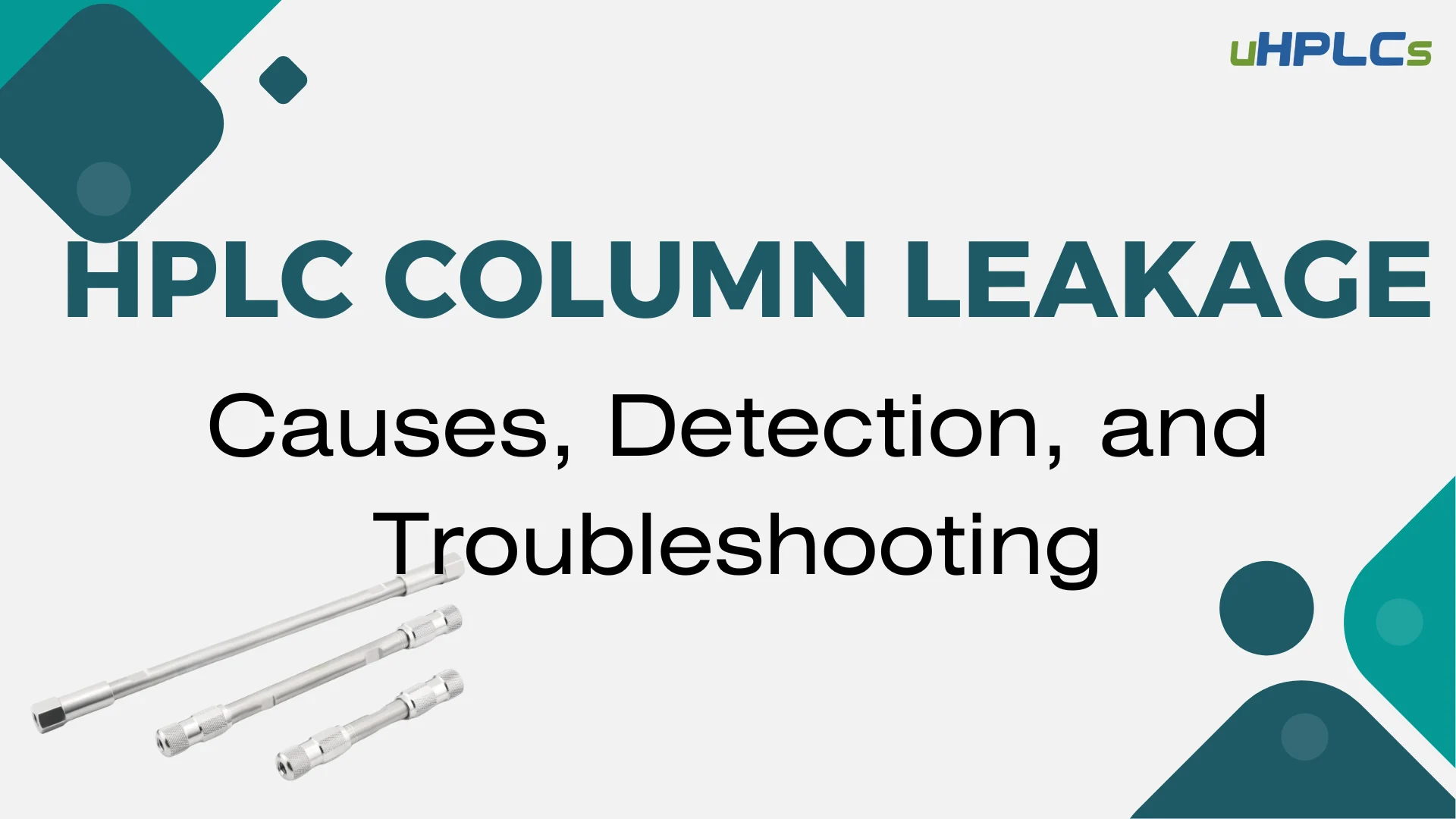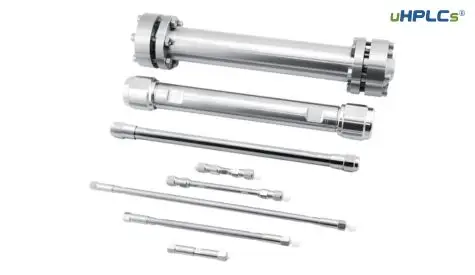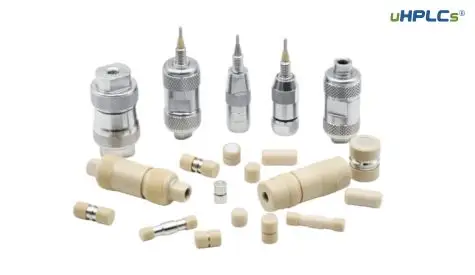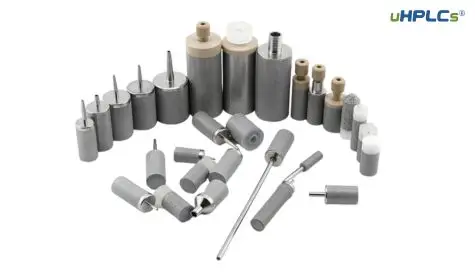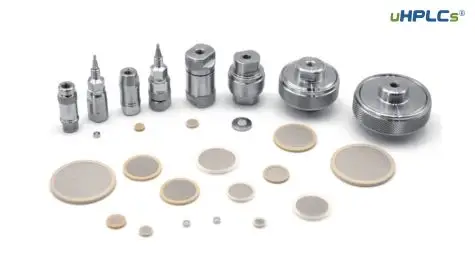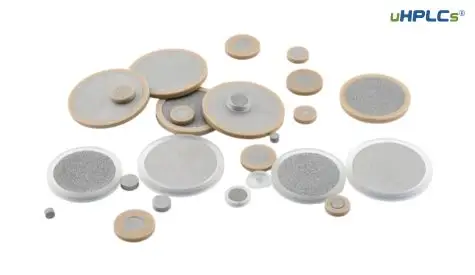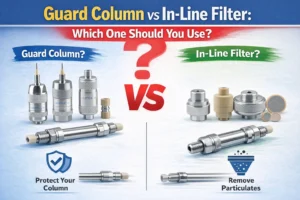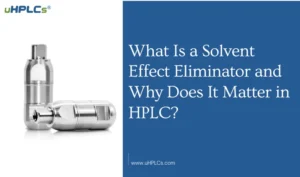Introduction
High Performance Liquid Chromatography (HPLC) is an essential analytical technique widely used in pharmaceutical, environmental, food, and chemical industries for the separation, identification, and quantification of complex mixtures. Its accuracy, sensitivity, and repeatability make it a cornerstone in modern analytical laboratories.
At the heart of any HPLC system lies the column—the component responsible for the actual separation of analytes. The performance of an HPLC system is highly dependent on the integrity of the column. Any issues affecting the column, especially leakage, can lead to compromised results, loss of sample, instrument damage, and even safety hazards.
This article explores the topic of HPLC column leakage: what it is, how it happens, and what can be done to prevent and resolve it. Understanding the causes, identifying the symptoms, and implementing appropriate solutions are essential steps in ensuring data integrity and maintaining system performance.
What is HPLC Column Leakage?
In the context of HPLC, column leakage refers to the unintended escape of mobile phase (solvent or solvent mixture) from the column or its connection points. Leakage can occur either externally—at the fittings or seals that connect the column to the instrument—or internally—within the column body due to defects or damage.
Two Types of Leakage:
External Leakage:
This occurs at the connection points—usually between the column end fittings and the tubing from the HPLC system. It is often visible as droplets, wet surfaces, or puddles near the fittings. External leakage typically results from mechanical issues like loose connections or worn ferrules.
Internal Leakage:
More subtle and harder to detect, internal leakage happens within the column structure itself, such as at the frits or seals. It may not be visible but can cause abnormal chromatographic behavior, such as loss of resolution, peak tailing, or pressure instability.
Whether internal or external, leakage compromises several critical aspects of HPLC operation:
·Pressure stability: Loss of seal can lead to fluctuations or drops in back pressure.
·Flow rate consistency: Uneven or unstable flow affects retention time and reproducibility.
·Chromatographic performance: Peak shape, resolution, and quantification accuracy all suffer.
·Safety: Leakage of hazardous solvents may pose health risks or cause instrument damage.
Understanding and detecting leakage early is key to preventing downtime, loss of data, and unnecessary costs.
Common Causes of HPLC Column Leakage
1. Mechanical Causes
Mechanical failure is one of the most frequent and preventable causes of HPLC column leakage.
Loose fittings or worn ferrules: Over time, ferrules and nuts may become worn or improperly seated, especially if over-tightened or frequently reconnected. This leads to poor sealing and external leakage.
Damaged end fittings or seals: Physical damage due to mishandling, cross-threading, or over-torquing can deform metal or polymer parts, preventing proper sealing under high pressure.
Incorrect installation or excessive pressure: Installing a column without proper alignment, or operating beyond the pressure rating, can compromise structural integrity and create leaks.
2. Chemical Degradation
Solvents used in HPLC can be harsh on column components if materials are not compatible.
Corrosive solvents: Strong acids or bases can gradually degrade stainless steel, PEEK, or sealing materials. Even buffered systems, if not properly rinsed, may cause corrosion over time.
Swelling or shrinking of polymers: Polymeric parts such as PEEK tubing, seals, or frits may expand or contract when exposed to certain solvents (e.g., THF, DMSO), leading to gaps and loss of sealing.
3. Thermal Stress
Temperature variations in the HPLC system—whether planned or accidental—can induce material expansion or contraction, contributing to leakage.
Temperature cycling: Repeated heating and cooling cycles can weaken seals, especially in systems without adequate temperature control.
Excessive heating: Exceeding the maximum recommended temperature of a column can degrade bonding, melt polymeric parts, or unseat frits, all of which may result in leakage.
4. Manufacturing or Batch Defects
Although rare, some leakage cases originate from production flaws.
Improper packing: Poorly packed columns can create voids or channels that disrupt flow and internal sealing.
Seal misalignment or defective frits: A faulty end fitting or improperly installed frit can result in dead volume or pressure leaks.
How to Identify Column Leakage
Early detection of HPLC column leakage is essential to avoid compromised data, instrument damage, and operational downtime. Recognizing both visual cues and performance anomalies is key to diagnosing leakage.
Signs and Symptoms of Leakage:
*Visible liquid around column end fittings or tubing connections is the most obvious indicator of an external leak.
*Unstable baseline on the chromatogram or pressure fluctuations during runs may signal internal or minor external leakage.
*Sudden drop in flow rate or backpressure without changes to the method or pump settings often points to leakage.
*Unexpected peak broadening, tailing, or loss of resolution—particularly if previously well-resolved peaks degrade—can be a sign of compromised sealing within the column.
Tools and Methods for Leak Detection:
*Pressure tests: Disconnect the column and run the system with a blank or cap to isolate whether pressure loss is column-related.
*UV dye or solvent tracing: Introducing a visible or UV-detectable dye in the mobile phase can help trace fluid paths and highlight leaks.
*Leak sensors: Modern HPLC systems may be equipped with electronic leak detectors that automatically alert users when solvent is detected where it shouldn’t be.
Routine inspection and preventive checks before each run can reduce the likelihood of undetected leaks.
Effects of Leakage on Analytical Performance
Even minor leaks in an HPLC column can have significant repercussions for method performance, system integrity, and analytical accuracy.
1. Poor Reproducibility and Precision
Leaks cause inconsistent flow rates and backpressures, leading to variability in retention time, peak area, and quantification—key factors in regulated environments.
2. Sample or Mobile Phase Contamination
Leakage can result in exposure to external contaminants or introduce air into the flow path, impacting detector sensitivity and baseline noise.
3. Loss of Resolution and Retention Accuracy
Unstable pressure and compromised column packing can affect separation efficiency, leading to co-elution or distorted peak shapes.
4. Risk of Instrument Damage
Long-term leakage can corrode sensitive components, such as the pump head, autosampler, or detector cell—especially when dealing with aggressive solvents like acetonitrile, TFA, or chloroform.
Overall, leakage not only affects data quality but also increases maintenance costs and instrument downtime.
Troubleshooting and Resolving Leakage
1. Step-by-Step Troubleshooting Guide
A systematic approach can help quickly locate and fix the issue:
·Identify the leak location: Check inlet/outlet fittings first. If no external leak is visible but symptoms persist, suspect internal issues.
·Inspect ferrules and nuts: Replace any worn or deformed components; ensure correct positioning and compatibility.
·Reinstall or re-tighten connections: Use manufacturer-recommended torque settings to avoid under- or over-tightening.
·Check for damaged seals or cracked fittings: Replace any part that appears deformed or brittle.
·Confirm with a pressure test after reassembly to ensure the issue is resolved.
2. If the Column Itself is Leaking
If internal leakage is confirmed and not due to external fittings, more serious action may be needed:
·Discontinue use immediately: Continued use can further degrade the column and compromise future results.
·Contact the manufacturer: If under warranty, request evaluation or replacement.
·Do not attempt to open or repair packed columns manually, as this can damage the stationary phase, compromise performance, and void warranty.
·Preventive maintenance, proper training in column installation, and using compatible solvents within recommended conditions can minimize the risk of future leaks.
How HPLC Accessories Aid Leak-Handling – uHPLCs
Ensuring a tightly sealed HPLC system starts with high-quality consumables designed to prevent leaks before they occur. uHPLCs offers an array of chromatography accessories engineered for robust, leak-free connections and optimal system integrity:
- Inline filters and inlet solvent filters effectively catch particulates before they reach column fittings, reducing pressure spikes and protecting fragile seals.
- Guard columns act as sacrificial shields, capturing matrix contaminants that might otherwise compromise column end fittings or cause pressure leaks.
- Precision PEEK fittings and 316L stainless-steel connectors provide chemically resistant, high-pressure, low-dead-volume connections that avoid common weak points where leakage originates. These universal connectors are reusable and compatible with most HPLC systems, minimizing interface mismatch risks.
Together, these components from uHPLCs not only bolster leak protection but also enhance chromatographic consistency and overall system reliability—key to maintaining data quality and prolonging column life.
Conclusion
Maintaining the integrity of an HPLC column is essential for reliable and accurate chromatographic analysis. Leakage issues, whether due to mechanical faults, chemical degradation, or thermal stress, can significantly compromise analytical performance and system safety. Early identification of leakage symptoms and prompt troubleshooting are crucial to minimize downtime and prevent damage. By understanding common causes and implementing proper maintenance practices, users can extend column lifespan and ensure consistent, high-quality results. Investing in quality chromatographic consumables and accessories further helps to reduce leakage risks, safeguarding both your analytical system and data integrity.

